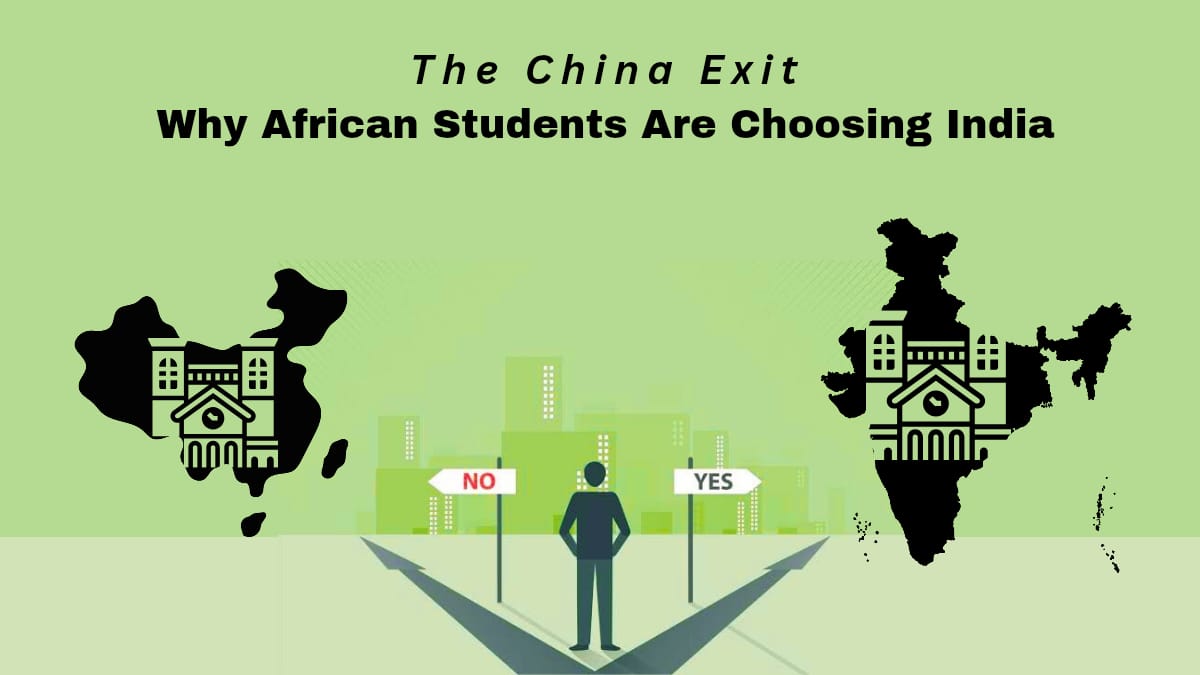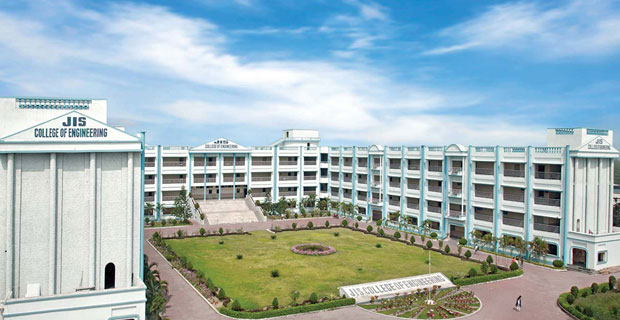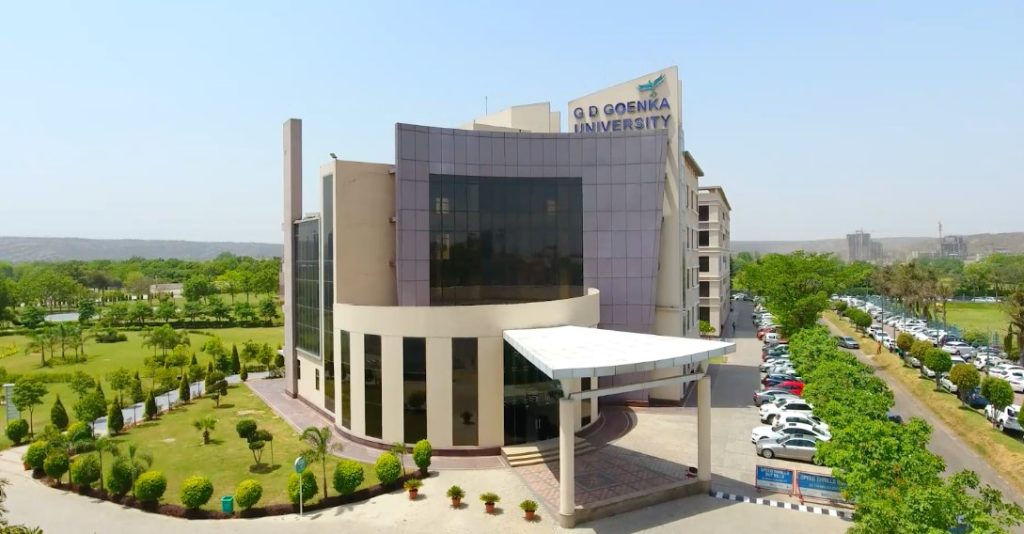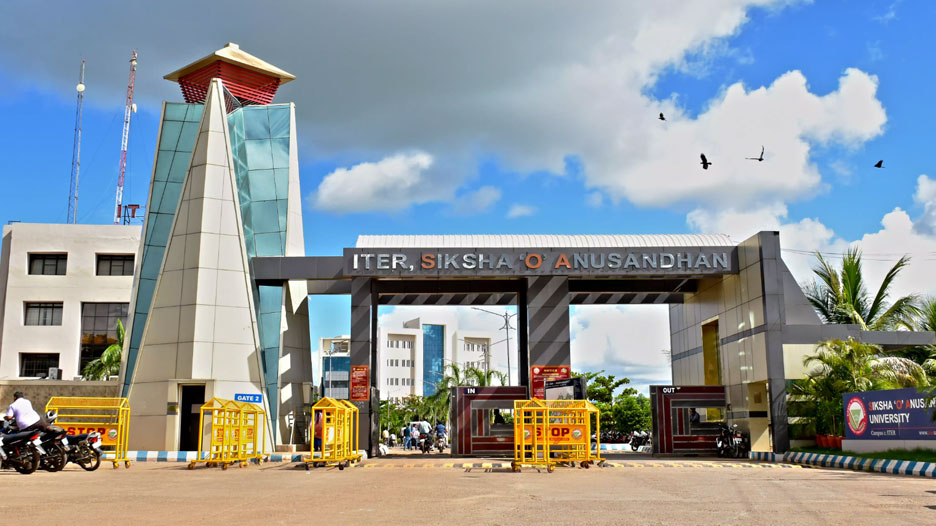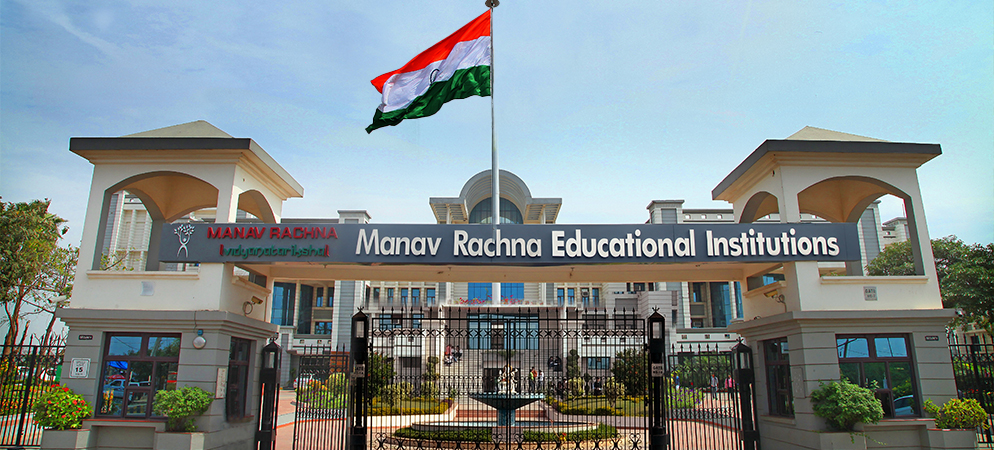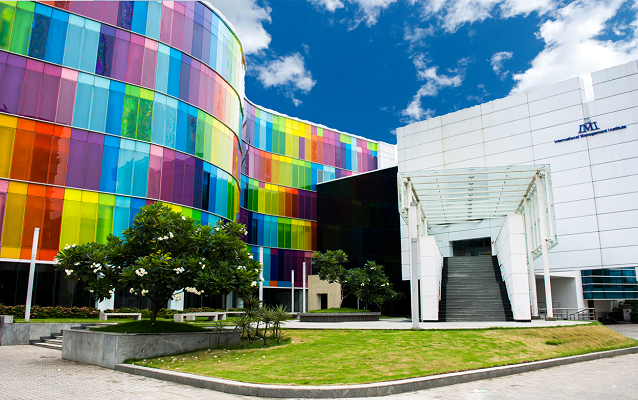In 2018, Beijing’s Tsinghua University boasted more than 3,000 African students, representing China’s increasing supremacy as Asia’s education hub. Flash-forward to 2025, and the scene is dramatically different. China’s lecture halls remain vacant while campuses in India like Delhi University are abuzz with Swahili-speaking, Yoruba-speaking, and Hindi-speaking African students in cafeterias. Enrollment statistics state that African student enrollments in China have fallen by 22% from 2020, while India increased its enrollments by 63%, reaching a record number of over 30,000 African students in 2024.
What ignited this seismic shift? From increasing education fees in China and tightened visa regulations to the competitive scholarship schemes, English-medium education, and increasing cultural affinity, this report pulls the threads together on why African students are re-writing their destinies—and how Indian institutions are maximizing this momentous opportunity.
The Fall of China’s African Education Dream
From Meteoric Rise to Steady Decline
Between the years 2010 and 2020, African student enrollments in China grew by more than 400%, driven by handsome scholarships under the Forum on China-Africa Cooperation (FOCAC) and a carefully calibrated combination of soft power diplomacy and infrastructural investment. In 2018, China accommodated more than 80,000 African students, making it the second most sought-after destination after France.
However, this momentum has waned. Post-pandemic realities—including geopolitical friction, rising living costs, and a more insular Chinese academic environment—have triggered a sharp retreat. By 2024, enrollments fell to approximately 63,500—a 22% decline from their peak. The reasons are multilayered and structural:
1. Soaring Costs: A Budgetary Nightmare
China was once praised for offering quality education at affordable prices. That narrative has flipped. Here’s a comparison that African students now consider carefully:
| Program | China Tuition (2025) | India Tuition (2025) | Cost Advantage |
| Engineering | $4,500/year | $1,800/year | 60% cheaper in India |
| Medicine | $8,000–12,000/year | $5,000/year | 50% cheaper |
| MBA | $7,000/year | $3,200/year | 54% cheaper |
Cost of living widens this gap. Rents in Beijing cost on average $600/month for shared apartments, while they cost $250 in Bengaluru. A $5 meal in Shanghai would cost $2 in Mumbai. Health insurance and public transportation are also much less expensive in India.
To compound the problem, Chinese government scholarships for African students were cut by 18% between 2020 and 2025, as China shifted funds to aid its local tech industry and pandemic recovery.
2. Hostile Environment: Discrimination and Digital Surveillance
African students in China usually complain of feelings of isolation and suspicion. While they have come in under the cover of diplomatic goodwill, their everyday experience reads otherwise.
A 2024 Human Rights Watch report chronicled racial profiling in such cities as Guangzhou, in which African residents had to endure disproportionate police attention and random searches. Several universities have heightened monitoring, such as compulsory face scanning in libraries and dorms. Others even block access to VPNs, restricting communication using WhatsApp, Telegram, or Zoom.
A 2023 AfroBarometer Survey found that 67% of African students in China reported having “no close Chinese friends”. Language difficulties exacerbate the problem. Even with the increasing popularity of English-taught courses, much of China’s curriculum—particularly in medicine—remains dependent on Mandarin fluency.
3. Cultural Kinship: From Nollywood to Bollywood
India and Africa have common cultural affinities—be it cuisine and film or music and religion:
- African students feel at home in Bollywood, whose domesticity, hardship, and victory themes touch the soul.
- Intercultural events—initiated by student unions and universities—initiate integration and identity celebration.
- Institutions of faith are also involved. Ethiopian Orthodox students, for example, are accommodated by Indian theological seminaries through special arrangements.
4. Career Springboard: Jobs, Startups, and Global Networks
India is not just a destination for degrees—it’s a career catapult.
- 22% of Indian graduates from African institutions work in Indian firms such as Wipro, Infosys, and Airtel.
- The Startup India program promotes foreign student entrepreneurship. Marie Uwamahoro from Rwanda is a prime example; her sustainable fashion app attracted seed funding from Indian angel investors.
- Alumni organizations such as the African Students in India Association (ASIA) provide mentoring, job placements, and belonging that crosses borders.
Voices from the Ground: Why African Students Are Choosing India
1. Amina B., Ghana – JIS University, B.Tech in Engineering
“At JIS, I found both academic rigor and a sense of belonging. Their frequent African cultural events helped me make friends fast. Plus, West Bengal’s connectivity makes traveling home easier during holidays.”
2. Peter O., Nigeria – GD Goenka University, B.A. in Hospitality Management
“Studying near Delhi gives me the exposure I need. From airport pickup to career mentorship, GD Goenka made my transition smooth. I’m currently interning with a luxury hotel chain—something I couldn’t even imagine back home.”
3. Grace M., Zambia – SOA University, B.Sc. in Nursing
“SOA’s healthcare programs are world-class. The faculty is deeply invested in practical training, and I already have job offers from reputed hospitals in India. The NAAC A-grade recognition speaks for itself.”
4. Kwame A., Ivory Coast – Manav Rachna University, BPT (Physiotherapy)
“As a vegetarian, I thought food would be a challenge—but the African cuisine at our hostel makes it feel like home. There are also student-led cultural societies that regularly organize events from back home.”
5. Chipo N., Zimbabwe – IMI Kolkata, MBA in International Business
“IMI Kolkata gives me a global outlook with a strong India foundation. The MBA is industry-focused, and the urban setting is ideal for networking. It’s helping me prepare for a career that spans continents.
Top Indian Universities for African Students in 2025
| University | Star Programs | African Enrollment | Key Perks |
| JIS University | Engineering, Pharmacy, Management | 500+ | West Bengal location, cultural events, excellent transit |
| GD Goenka University | Hospitality, Law, Design | 800+ | Near Delhi, international mentorship, airport pickup |
| Siksha ‘O’ Anusandhan (SOA) University | Nursing, Dental Sciences, Agriculture | 600+ | NAAC A-grade, practical focus, healthcare placements |
| Manav Rachna University | Engineering, Physiotherapy, Business | 700+ | African cuisine, cultural societies, career support |
| IMI Kolkata | PGDM: Intl. Business, Marketing, Finance | 300+ (PG only) | Urban campus, AICTE-approved MBA, corporate partnerships |
Government and Diplomatic Initiatives: Building Bridges Beyond Education
India’s strategic interaction and soft power engagement with Africa are the key drivers of the growing number of African students in Indian educational institutions. They extend far beyond university partnerships and include bilateral agreements, pan-African engagement, and state-sponsored mobility programs.
1. The Indian Council for Cultural Relations (ICCR)
The ICCR has significantly enhanced its Africa-focused scholarship portfolio. In 2024 alone, it granted over 3,000 scholarships to African students exclusively, sponsoring tuition, accommodation, and living stipends. Examples of high-profile schemes include:
- Africa Scholarship Scheme
- CV Raman Fellowship for African Researchers
- AYUSH Scholarships for traditional Indian medicine (Ayurveda, Yoga, etc.)
These scholarships are not only reducing the financial burden but also thoughtfully crafted to complement African development priorities in health, agriculture, and engineering.
2. India-Africa Forum Summit (IAFS)
The IAFS framework includes education cooperation as part of its main pillars of support. During the third summit (IAFS-III), India promised to establish over 100 capacity-building centers in Africa and signed a number of MoUs on mutual recognition of degrees, student mobility, and faculty exchange.
3. Embassy Outreach and Education Fairs
Indian embassies in Kenya, Nigeria, Ethiopia, Ghana, and South Africa are actively organizing annual “Study in India” fairs, conducting individual counseling for students and parents. Certain African Union ambassadors to India have acknowledged such fairs as essential in responding to biased attitudes towards the quality of Indian education.
4. State-Led Initiatives and Sister-City Programs
Kerala, Karnataka, and West Bengal are some of the states that have developed sister-city programs with African provinces (e.g., Kerala with Lagos State, Nigeria) focusing on cultural exchange, cooperative research, and student recruitment drives. Such de-centralized initiatives showcase Indian Tier-2 cities as open education centres.
5. Digital and Distance Education through SWAYAM and IGNOU
India’s education ministry is actively offering low-cost or no-cost e-learning through platforms like SWAYAM, which has enrolled over 50,000 African students in the process. India’s premier open university IGNOU has also entered into partnerships with several African universities for double degrees and satellite campuses.
Challenges: The Roadblocks India Must Address
Despite progress, India’s international education system must address several challenges to maintain momentum:
- Bureaucratic Delays: Though processing is quicker than in China (30 days compared to 90), more than 20% of African applicants experience delays because documents are incorrect or due to miscommunication.
- Discrimination and Bias: Isolated incidents of racism, particularly in housing, continue to occur. African students are refused rentals by some landlords. Efforts such as LPU’s diversity training are moves set in the right direction.
- Infrastructure Stress: Several Tier-2 cities do not have enough hostel facilities, forcing international students to off-campus accommodation with inconsistent standards.
The Future Playbook: How India Can Sustain the Momentum
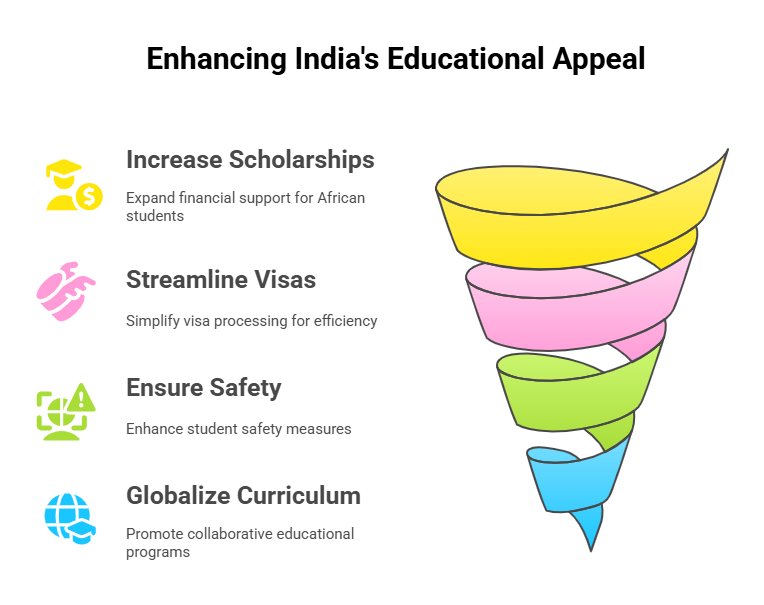
India’s emergence as a destination of choice for education can be cemented by wise policy action:
- Triple Scholarships: Increase ICCR and institutional scholarships to fund 10,000+ African students every year by 2030.
- Streamline Visas: Establish a special “Africa Desk” at Indian missions for quicker processing of student visas.
- Invest in Student Safety: Partner with police to create 24/7 multilingual helplines, safe housing registries, and anti-discrimination hotlines.
- Globalize Curriculum: Initiate collaborative degree programs with African universities and enhance outbound exchange through universities such as IGNOU and Delhi University.
The New Delhi–Dakar–Dar es Salaam Axis
The “China Exit” represents more than just a change in student migration patterns—it is an indicator of an evolving global order. African students are no longer content being passive recipients of knowledge. They are demanding value, voice, and visibility. India, with its affordability, openness, and democratic sentiment, provides just that.
It is a strategic turning point for Indian universities: Invest in African students now, or risk falling behind global influence tomorrow.
To Africa’s young people, India is not a destination—it’s a co-traveler in purpose, progress, and prosperity. With African children’s faces filling the classrooms from Delhi to Bhubaneswar, the future of international education stands clearly and unmistakably Indo-African.
Reference
UNESCO Institute for Statistics. (2023).
Global Flow of Tertiary-Level Students.
Retrieved from: https://uis.unesco.org/en/topic/international-student-mobility
Indian Council for Cultural Relations (ICCR). (2024).
Scholarship Schemes for African Nationals.
Retrieved from: https://www.iccr.gov.in/scholarships
Ministry of External Affairs, Government of India. (2024).
India-Africa Relations Overview.
Retrieved from: https://mea.gov.in/africa.htm
Human Rights Watch. (2024).
“Africans in China Face Discrimination and Over-Policing”.
Retrieved from: https://www.hrw.org
Afrobarometer. (2023).
Perceptions of African Students in China.
Retrieved from: https://www.afrobarometer.org
Written by Sreya Acharyay.

